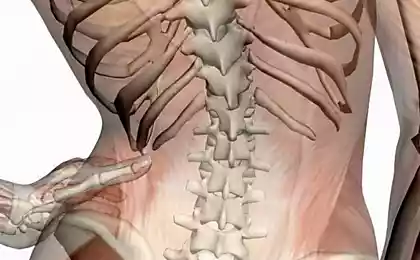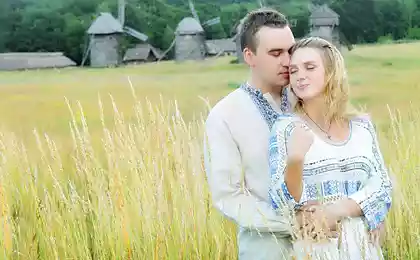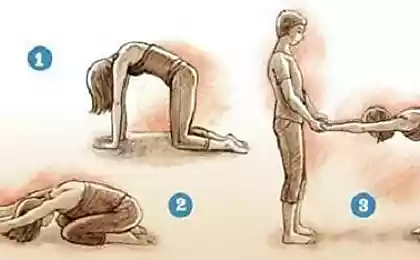493
Diaphragm of the pelvis: the forgotten skill not Prim tail
Lately, I spend most of the time, biomechanics, healthy posture and the question of how movement affects our body subject to gravity.
Research over the last few years show that how we move has to have not only a mechanical effect, as previously thought, but also cause biochemical changes at the cellular level, changing us from the inside.
This process of adaptation of the organism and its formation under the influence of movements, is called mechanotransduction.

We live in a world which forces us to sit all the time, "tucked under her tail." The furniture on which we sit all day, optimized for comfort and convenience, but most often it is not ergonomically adapted to the health of the pelvic floor. Who ever thinks about this?
There is a common myth that the problems with the diaphragm of the pelvis — this is a natural consequence of pregnancy and childbirth, or men, are aging. But we rarely try to find out why a little deeper in how we live and how we move.
Did you know that the anatomical function of what is left of the tail, is to control the opening and closing of the exit from the pelvis. If you look at a dog or another tailed animal, you notice that they keep the tail upright, waving cheerfully to them, if the mood is good. That his position is "default". If you see that the dog lowered his tail and tucked it between the hind legs, as a rule, it is a sign that the dog is in the alarm condition, and her pelvic diaphragm are in the same tense as the rest of the body that responds to danger.
Although we are in the coccyx was only a small segment of what was once a full-fledged tail of a mammal, he acts exactly the same. In the raised position it opens the exit from the pelvis, preloaded — closes it, clenching the pelvic diaphragm.
Dog with tail between its legs corresponds to your posture while sitting on the tailbone, drawing on the back of a chair or sofa. If the day you spend in this position for many hours, aperture of the pelvis is not able to relax and give the muscle fibers to finish to its full length, which is achieved at rest. So they gradually grow shorter.
In the book Pelvic Powers ("the Strength of loins") Eric Franklin compares the natural movement of the pelvis with a kite. When you get up, the diaphragm of the pelvis rises and tapers as well as a soaring kite. When you sit down (not tucking in his tail, using the ischium), the diaphragm of the pelvis expands, cracking down on the full length that is similar to descending a kite, is also open at landing.
But what if you do not give him open up?

Tight muscles — not the same as strong muscles
Biomechanic Katie Bowman compares the optimal functioning of the pelvic floor with a trampoline. It supports the weight of all the organs of the pelvis, and all the extra cargo otprygivat from its healthy, elastic fibres, Contracting and relaxing in a natural way.
If you keep the muscles constantly under stress, this allows them to function optimally. Moreover, our body naturally adapts to the mode in which we use the muscles, and as a result, they are shortened.
This is compounded by the excessive exercises of the pelvic floor (Kegel exercises) according to the principle "the more, the better." Bowman explains that many times reducing one muscle group separately from the rest of the body and not allowing them to fully relax, you will get a shortened tight muscles.
But a tight muscle is not the same as strong. Strong muscles are characterized by their ability to fully contract and fully relax.
Why am I telling you this? Reading the last book Bowman, I began to think about how to move more in General and not just when you exercise. Most often I began to squat, playing with my baby, picking up things from the floor and even walking to the bathroom.
If you want to "breathe child", learn first to draw the tail
Anatomically, the child was released, the diaphragm of the pelvis must relax, but you just can't relax the diaphragm of the pelvis when your tailbone is preloaded. All-you-can — use the muscle power (back pressure of the peritoneum and diaphragm to hold your breath and pushing) against the diaphragm of the pelvis. And it's almost a sure tear and possible dysfunction of the pelvis.
I was lucky that this sports exercise (and your experience of giving birth I can only describe) I managed to make no serious injuries. Just at the last moment my body took over and, following a primeval instinct, as if itself jumped on the chair, completely opening the outlet of the pelvis. Squatting on his haunches and on his knees, scrugli the back, would probably bring me to birth with medical assistance.
"The modern science of childbirth is supposed to prepare the body to a state of necessary mobility, mainly on the secretion of hormones (e.g., relaxin)," says Katie Bowman. Yes, the hormone relaxin helps the body open up to birth, but this is not enough if we do not have strong muscles that can ultimately shrink and relax. At the same time, a separate group of strong muscles is also not enough.
A good way to train for endurance — walking in large quantities. "Woman, if she is committed to the natural process of childbirth, have to follow all the other "natural" processes that were part of women's lives for millennia — to be held on 12-15 kilometers on a daily basis and several times a day to sit on his haunches for spravleniya natural needs," adds Katie Bowman.
Also fun: Fitness and pregnancy
Michel odent: how to make childbirth easier
To summarize: do not tuck up your tail. Walk more, move more in General and especially when pregnant.
Changing your lifestyle in the direction of greater mobility and more walk, we give your body the opportunity to function in the best way.published
Author: Ivanna, Demmel
Source: www.domrebenok.ru/blog/zabytoe-umenie-ne-podzhimat-khvost/index.php?bitrix_include_areas=Y&clear_cache=Y
Research over the last few years show that how we move has to have not only a mechanical effect, as previously thought, but also cause biochemical changes at the cellular level, changing us from the inside.
This process of adaptation of the organism and its formation under the influence of movements, is called mechanotransduction.

We live in a world which forces us to sit all the time, "tucked under her tail." The furniture on which we sit all day, optimized for comfort and convenience, but most often it is not ergonomically adapted to the health of the pelvic floor. Who ever thinks about this?
There is a common myth that the problems with the diaphragm of the pelvis — this is a natural consequence of pregnancy and childbirth, or men, are aging. But we rarely try to find out why a little deeper in how we live and how we move.
Did you know that the anatomical function of what is left of the tail, is to control the opening and closing of the exit from the pelvis. If you look at a dog or another tailed animal, you notice that they keep the tail upright, waving cheerfully to them, if the mood is good. That his position is "default". If you see that the dog lowered his tail and tucked it between the hind legs, as a rule, it is a sign that the dog is in the alarm condition, and her pelvic diaphragm are in the same tense as the rest of the body that responds to danger.
Although we are in the coccyx was only a small segment of what was once a full-fledged tail of a mammal, he acts exactly the same. In the raised position it opens the exit from the pelvis, preloaded — closes it, clenching the pelvic diaphragm.
Dog with tail between its legs corresponds to your posture while sitting on the tailbone, drawing on the back of a chair or sofa. If the day you spend in this position for many hours, aperture of the pelvis is not able to relax and give the muscle fibers to finish to its full length, which is achieved at rest. So they gradually grow shorter.
In the book Pelvic Powers ("the Strength of loins") Eric Franklin compares the natural movement of the pelvis with a kite. When you get up, the diaphragm of the pelvis rises and tapers as well as a soaring kite. When you sit down (not tucking in his tail, using the ischium), the diaphragm of the pelvis expands, cracking down on the full length that is similar to descending a kite, is also open at landing.
But what if you do not give him open up?

Tight muscles — not the same as strong muscles
Biomechanic Katie Bowman compares the optimal functioning of the pelvic floor with a trampoline. It supports the weight of all the organs of the pelvis, and all the extra cargo otprygivat from its healthy, elastic fibres, Contracting and relaxing in a natural way.
If you keep the muscles constantly under stress, this allows them to function optimally. Moreover, our body naturally adapts to the mode in which we use the muscles, and as a result, they are shortened.
This is compounded by the excessive exercises of the pelvic floor (Kegel exercises) according to the principle "the more, the better." Bowman explains that many times reducing one muscle group separately from the rest of the body and not allowing them to fully relax, you will get a shortened tight muscles.
But a tight muscle is not the same as strong. Strong muscles are characterized by their ability to fully contract and fully relax.
Why am I telling you this? Reading the last book Bowman, I began to think about how to move more in General and not just when you exercise. Most often I began to squat, playing with my baby, picking up things from the floor and even walking to the bathroom.
If you want to "breathe child", learn first to draw the tail
Anatomically, the child was released, the diaphragm of the pelvis must relax, but you just can't relax the diaphragm of the pelvis when your tailbone is preloaded. All-you-can — use the muscle power (back pressure of the peritoneum and diaphragm to hold your breath and pushing) against the diaphragm of the pelvis. And it's almost a sure tear and possible dysfunction of the pelvis.
I was lucky that this sports exercise (and your experience of giving birth I can only describe) I managed to make no serious injuries. Just at the last moment my body took over and, following a primeval instinct, as if itself jumped on the chair, completely opening the outlet of the pelvis. Squatting on his haunches and on his knees, scrugli the back, would probably bring me to birth with medical assistance.
"The modern science of childbirth is supposed to prepare the body to a state of necessary mobility, mainly on the secretion of hormones (e.g., relaxin)," says Katie Bowman. Yes, the hormone relaxin helps the body open up to birth, but this is not enough if we do not have strong muscles that can ultimately shrink and relax. At the same time, a separate group of strong muscles is also not enough.
A good way to train for endurance — walking in large quantities. "Woman, if she is committed to the natural process of childbirth, have to follow all the other "natural" processes that were part of women's lives for millennia — to be held on 12-15 kilometers on a daily basis and several times a day to sit on his haunches for spravleniya natural needs," adds Katie Bowman.
Also fun: Fitness and pregnancy
Michel odent: how to make childbirth easier
To summarize: do not tuck up your tail. Walk more, move more in General and especially when pregnant.
Changing your lifestyle in the direction of greater mobility and more walk, we give your body the opportunity to function in the best way.published
Author: Ivanna, Demmel
Source: www.domrebenok.ru/blog/zabytoe-umenie-ne-podzhimat-khvost/index.php?bitrix_include_areas=Y&clear_cache=Y
Michael Pollan: the darker the bread, the longer you live
Effective treatment with foil of sciatica and not just























